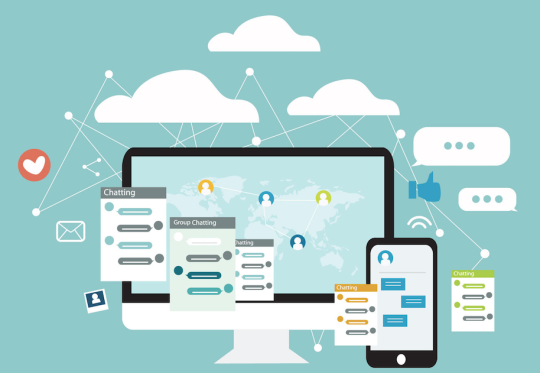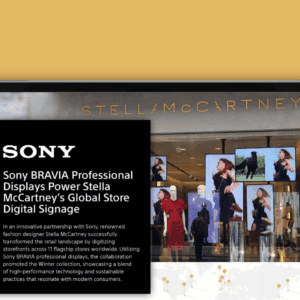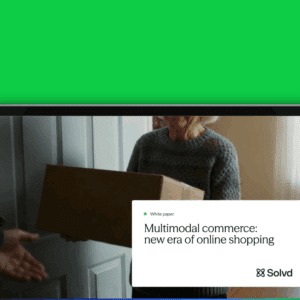By Alicia Fiorletta, Senior Editor

There has been a lot of buzz surrounding the Internet of Things (IoT) as of late. So much so that Retail TouchPoints wrote an extensive trend piece on it!
It’s easy to see why industry players are so excited about IoT. Seeing how Rebecca Minkoff and UGG are connecting devices and data to create more memorable and personalized in-store experiences is exciting. And if anything, these examples encourage retail execs to think of how their brand can create similar experiences!
But it’s easy for us to get lost in the buzziness of buzzwords. Because IoT has figuratively been banged over our heads for the past year, it’s easy to see why more use cases have not cropped up. We’re just stuck trying to define and describe what it means!
So what are the key trends in IoT? What technologies and tactics should retailers take note of?
In this special executive Q&A, JoJo Rowden, Story Teller and Lead Business Analyst at ThoughtWorks, shares her piece.
RTP: How would you define the IoT?
Rowden: The discussion of IoT has been growing of late, and is no longer a concept of the future; it has already arrived. I would describe it as the connection and intelligence of everyday physical things and the way that they relate to the world around them via Internet network connectivity.
RTP: What impact do you believe it is currently having not only on retailers but on consumers as well?
Rowden: It presents an opportunity for retailers of all sizes to add real value to their customers by integrating devices in a meaningful way, and harnessing the data that they are fed back in order to personalize the way that they service customers. This might also include offering new capabilities to respond to gaps or opportunities that they identify as a result.
There are already examples of consumers reducing their costs, saving energy and generally eliminating some of the troubles of everyday life thanks to the advancement of IoT devices. Look at Nest, the intelligent, mobile-controlled thermostat, or Quirky’s Aros, a smart air conditioner that adapts to your location, budget and schedule to maintain the perfect temperature.
RTP: How do you believe retailers are keeping pace with consumers’ adoption of smart/wearable devices?
Rowden: Savvy consumers are always looking for the next big thing to add value to their fast-paced lives, putting pressure on retailers to constantly innovate. Some organizations are waiting to see where this movement will go before throwing themselves into the wearables arena, whilst others hurry to keep up, even setting up specific wearable departments in their stores.
RTP: What technologies do you believe are having the most profound impact on the IoT trend?
Rowden: As the IoT becomes more prevalent, the large amount of data generated will need to be accessed, stored and processed. Cloud computing will become increasingly critical to support this shift, providing storage and transforming data into insights that can be utilized to drive decisions. Without this ecosystem, the benefits of these insights will not be realized, and precious customer data will be wasted.
Cheaper and ubiquitous Internet, micro-controllers and 3D printers also mean that anyone with interest can now participate in this field, building inexpensive prototypes and getting fast feedback to produce smart devices. I imagine that this competitive drive will force retailers to come up with original products, produced in more cost-effective ways.
RTP: Do you believe IoT will more dramatically impact the customer-facing side of the retail industry or more the back-end, enterprise side of things?
Rowden: From a backend, enterprise level, the IoT will certainly bring benefits, such as reducing waste and operational costs. Smarter manufacturing, intelligent stock management and automated shelf compliance will allow retailers to capture efficiencies that previously would have been impossible. However, the more visible and dramatic impact will be on the customer-facing side of the retail industry.
The IoT will bring to life immersive, multi-sense retail experiences that shoppers are growing to love and even expect from retailers. Think smart trolleys, smart mirrors and interactive changing rooms, all of which revolutionize the shopping experience. Engaging customers in this way, companies ensure that consumers have all the relevant information they personally need to have a seamless interaction and sale. Retailers will captivate customers with multichannel experiences, as well as making the shopping experience smarter and more convenient.
Imagine a world where your smart fridge notifies you on the way home that you are out of eggs and pre-orders and pays for those groceries to be delivered to your door, via a delivery drone, based on your calendar schedule. The opportunities are endless, and can create an experience that remains long after you have physically left a store.
RTP: What do you believe are the benefits of implementing beacons, wearable technology and other IoT touch points?
Rowden: Beacon technology can identify customers as soon as they enter the store, which dramatically changes the interaction between shopper and sales assistant. Equipped with their own wearable/smart devices, the sales associate can know who the customer is, what their purchase history has been and what their habits are and can consult with them accordingly.
For those who want to avoid social interaction at all costs, beacons can be integrated with store displays, such as mannequins to provide product details, inventory information and promotions directly to the customer, who can then select and pay for items from where they stand. In fact, it’s entirely feasible that the IoT will mean the death of queuing altogether, with companies experimenting with RFID chips in products, allowing customers to scan their baskets as they go, and pay via smart phones or tablets as they roam the shop floor.
More generally, Retailers will be able to adapt how customers discover products, investigate their options and how they transact, increasing both loyalty and spend. The benefits for them include invaluable data about customer habits, staff activity and feedback on the layout and flow of the store.
RTP: Are there any retailers you believe are successfully embracing IoT?
Rowden: Telstra, Australia’s largest telecommunications player, has an impressive flagship store in Sydney. It is a great example of a company trying to create a “digitally intimate” setting using technology. They have attempted to connect all of the customer touch points seamlessly and provide a personalized service that will delight consumers.
Interactive displays include a “sandbox,” or a tabletop device where the customer can place a phone on the surface to compare the features of different phones handsets, digital tickets to purchase directly from the shop floor, and “tap and take” cards that allow the customer to load up product info in store to review and compare later in their own homes. All the price tags in store have been printed using “digital ink” meaning they can be adjusted centrally and immediately as needed.
How is your retail business embracing IoT? Share your feedback in the comments section below!






